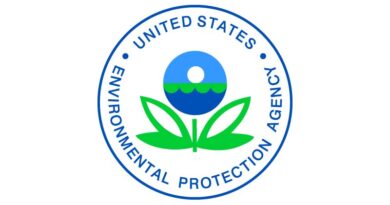
From Brazil to Vietnam, Demand for Indian Agrochemicals Is Growing Rapidly: M.K. Dhanuka
An exclusive interview with Mr. M.K. Dhanuka, Chairman, Dhanuka Agritech Limited
03 July 2025, New Delhi: India’s agrochemical sector is undergoing a profound transformation. Once seen primarily as a cost-effective manufacturer of generic crop protection products, the country is now stepping into a larger role on the global stage—both as a reliable export partner and an emerging centre for innovation. In this in-depth interview, Mr. M.K. Dhanuka, Chairman of Dhanuka Agritech Ltd., shares his perspective on the evolving export landscape, the regulatory and sustainability challenges facing the industry, and India’s future trajectory in agrochemical R&D.
India’s agrochemical industry is valued at USD 11.2 billion in FY2025, having grown 8.7% year-on-year despite a challenging global environment. Exports saw a sharp 22% decline in FY2024, driven by global inventory destocking, aggressive price competition from China, and weak demand in major markets. As global supply chains stabilise and agricultural activity rebounds, a moderate recovery is projected in FY2025, supported by improved demand and cost-competitive manufacturing by Indian players. The sector remains resilient and is projected to grow to USD 14.5 billion by FY2028, at a CAGR of 9%, according to a sector report by Rubix Data Sciences.
Q: What factors are driving India’s emergence as an agrochemical exporter, especially in the post-China+1 context?
India’s rising prominence as a major agrochemical export hub is the result of a mix of strategic global shifts and inherent domestic strengths. In the wake of the China+1 strategy, many countries and global companies are actively seeking to diversify their supply chains to reduce dependency on China. This has created a unique window of opportunity for India, which already has a well-established chemical manufacturing ecosystem and a significant cost advantage.
India benefits from a large pool of technically qualified professionals and well-developed chemical clusters, particularly in Gujarat and Maharashtra, which provide an efficient backbone for the agrochemical sector. Moreover, the increasing availability of R&D infrastructure and government initiatives have further boosted export prospects.
What truly strengthens India’s position is our ability to manufacture high-quality generic agrochemicals at globally competitive prices. Additionally, Indian companies have begun investing heavily in backward integration, which improves supply chain control and product quality. The adoption of greener manufacturing practices also aligns with global expectations and regulatory norms. Together, these elements have positioned India as a credible, scalable, and sustainable alternative in the international agrochemical supply chain.
Q: Which global markets are showing the strongest demand for Indian agrochemicals, and how are companies aligning their strategies accordingly?
Several international markets are now increasingly relying on Indian agrochemical exports, particularly regions like Latin America, Southeast Asia, and parts of Africa. Countries such as Brazil, Vietnam, and even Japan are witnessing a surge in agricultural activity and are therefore in need of efficient, cost-effective crop protection solutions. This growing demand has made them key focus areas for Indian exporters.
In response, Indian agrochemical companies are realigning their global strategies. This includes accelerating product registrations in these target markets, developing crop-specific formulations suited to local agro-climatic conditions, and strengthening their in-country distribution networks. There is also a heightened emphasis on ensuring that products comply with international regulatory and quality standards, especially in regions with stringent pesticide residue regulations.
Moreover, companies are investing in strategic alliances with local firms, universities, and agri-research centres to better understand and address regional challenges. These collaborations allow Indian companies to remain agile and customer-centric, and ensure they are not only entering new markets but are doing so with tailored solutions. This localisation, coupled with a commitment to sustainability, is helping Indian companies maintain a competitive edge across diverse global markets.
Q: How is the Indian industry addressing challenges like regulatory approvals, sustainability norms, and global residue limits?
The Indian agrochemical industry is taking a proactive and multi-pronged approach to overcome challenges related to international regulations, sustainability expectations, and residue management. Companies are significantly enhancing their regulatory capacities to navigate the complex and varied compliance requirements of global markets. Dedicated regulatory affairs teams are being established to expedite product approvals, both domestically and abroad, and to ensure smooth data generation and submission.
In terms of sustainability, Indian manufacturers are making strategic investments in eco-friendly production technologies. Concepts like green chemistry are being embraced, and several leading players have implemented zero-liquid discharge (ZLD) systems in their plants. These initiatives not only reduce environmental impact but also demonstrate India’s commitment to sustainable manufacturing practices, which is increasingly a key criterion for international buyers.
On the issue of residue limits, or Maximum Residue Levels (MRLs), Indian R&D is now prioritising the development of low-residue and residue-free formulations. This is particularly important in European and Japanese markets, where regulatory scrutiny is extremely high. Companies are collaborating with international consultants and laboratories to meet these benchmarks, which in turn improves market access and builds long-term trust with global customers. The cumulative effect of these efforts is a more compliant, responsible, and globally competitive agrochemical sector.
Q: What role is government policy—such as Make in India or chemical parks—playing in supporting export competitiveness?
Government policy has played a transformative role in enhancing the competitiveness of India’s agrochemical industry. The ‘Make in India’ campaign has provided the right momentum to encourage domestic manufacturing and reduce dependence on imports, especially for technical-grade active ingredients. Simultaneously, policy frameworks supporting the establishment of integrated chemical parks have created a conducive environment for industry growth.
Chemical parks offer numerous advantages: common utilities, effluent treatment facilities, improved logistics, and economies of scale. This reduces both capital and operational costs for manufacturers. By clustering similar industries, these parks also enhance knowledge sharing and innovation.
Furthermore, the government’s introduction of fast-track clearance mechanisms, simplified environmental norms for specific zones, and the promotion of export-focused infrastructure like port connectivity have collectively made it easier for agrochemical companies to scale operations and access global markets. In addition, policy emphasis on skill development, digitalisation, and sustainability ensures that companies are not just producing more—but producing better.
Overall, these interventions are fostering a more integrated, future-ready, and resilient agrochemical sector that is better equipped to serve international demand.
Q: Do you see India evolving from a cost-effective supplier to a global innovation hub in agrochemicals over the next five years? What are the current challenges?
Yes, India is on the path to transitioning from being known merely as a low-cost supplier of generic agrochemicals to becoming a significant global innovation hub. This transformation is already underway, driven by increasing investments in R&D, a growing talent pool of scientists, and collaborations with international research organisations. Indian companies are developing novel formulations, advanced delivery mechanisms, and greener alternatives to conventional chemistries—all of which are critical to sustainable agriculture.
Moreover, there is an encouraging shift toward developing patented molecules rather than only relying on off-patent generics. This reflects a broader vision of positioning India not just as a supplier, but as a creator of cutting-edge agrochemical solutions that can address complex global agricultural challenges.
However, there are some clear hurdles that need to be addressed. Regulatory clearance for new products, especially patented molecules, continues to be time-consuming and bureaucratically intensive. There is also a noticeable gap in capital investment when it comes to high-risk, high-reward R&D projects. Further, collaboration between academia and industry remains weak, which hinders the commercialisation of promising research from universities and research institutions.
To truly become a global innovation leader, India needs to strengthen its IP ecosystem, incentivise private and public R&D, and ensure faster and more transparent regulatory processes. If these challenges are tackled head-on, I am confident that India will not just meet global demand efficiently, but also define the next generation of agrochemical innovation for the world.
Also Read: Syngenta to Become Global Leader in Biologicals; Expanding Nature Inspired Solutions for Farmers
📢 If You’re in Agriculture, Make Sure the Right People Hear Your Story.
From product launches to strategic announcements, Global Agriculture offers unmatched visibility across international agri-business markets. Connect with us at pr@global-agriculture.com to explore editorial and advertising opportunities that reach the right audience, worldwide.






